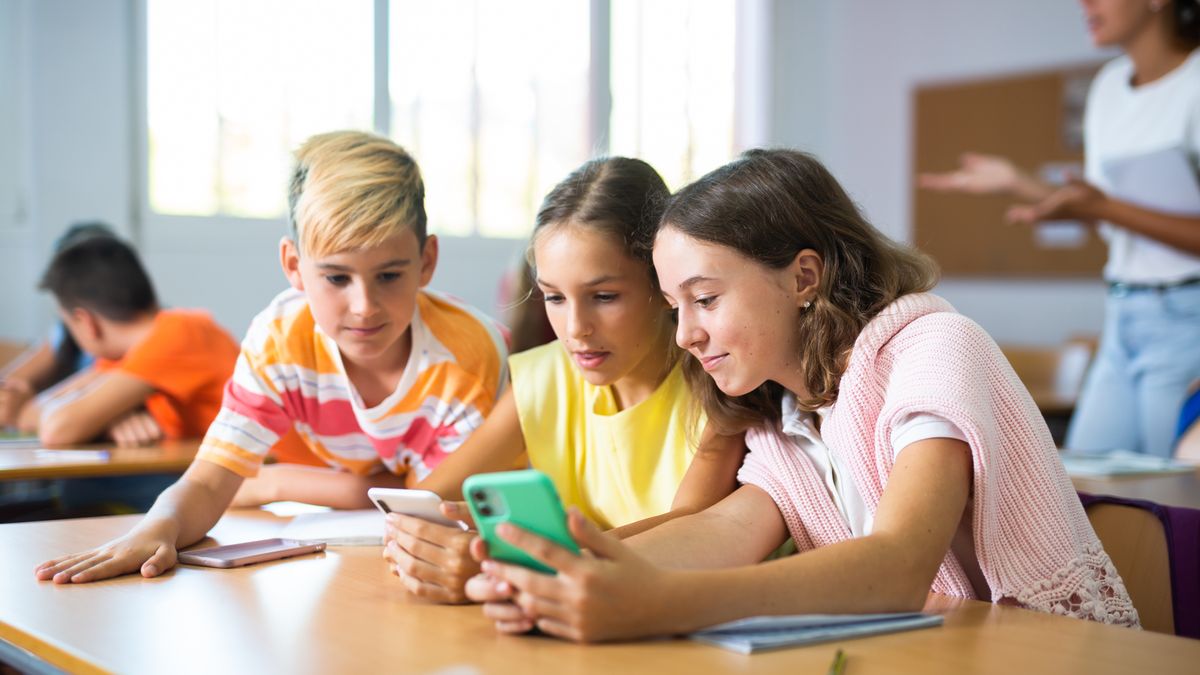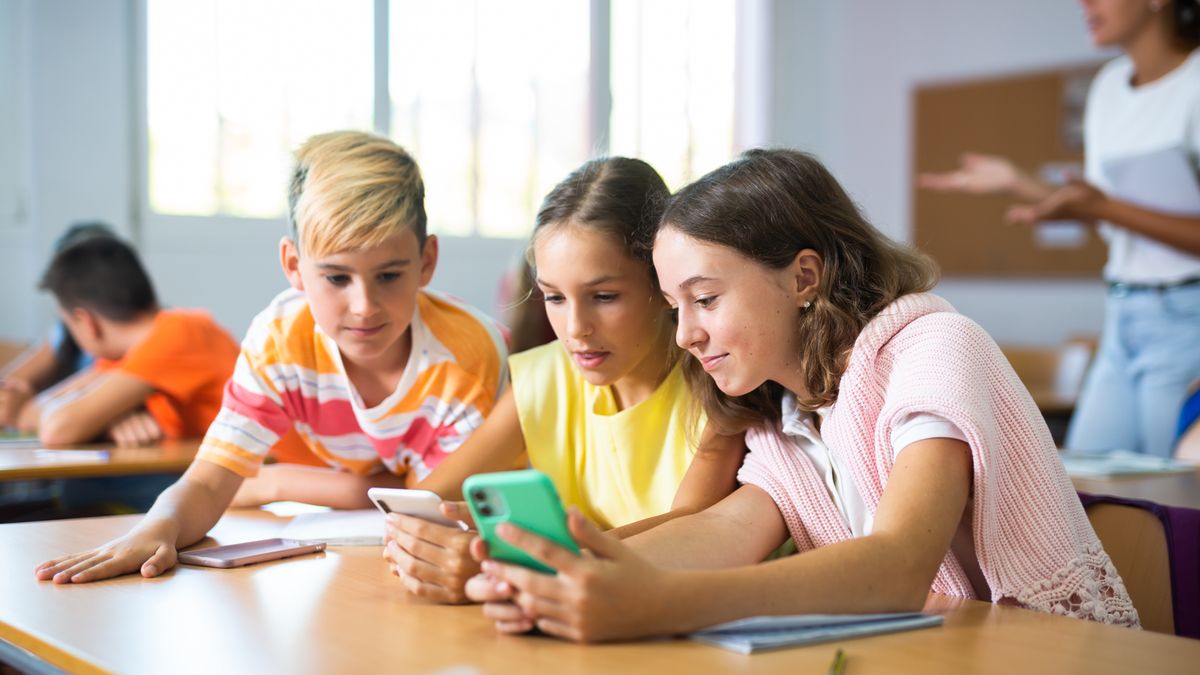
You’ll rarely meet a more tech-positive person than me, but even I have my limits. With what I now know about children, teens, and technology, I’m certain there’s one place the next great iPhone (likely the iPhone 16) doesn’t belong, and that’s in the classroom.
We’re likely just a few weeks away from Apple unveiling a collection of iPhone 16 handsets, including the iPhone 16 Pro, iPhone 16 Pro Max, and iPhone 16 Plus. My guess is that every model will be equipped to run the eagerly-anticipated Apple Intelligence, Apple’s first attempt at integrated generative AI.
When Apple CEO Tim Cook takes the stage on, according to most recent guesstimates, September 10, he’ll tout design updates, a faster piece of Apple Silicon (probably in an A18 line of mobile CPUs), and, naturally, all those Apple Intelligence capabilities.
if there’s one place where being online or on social media and constantly interrupted by notifications is a potentially net negative, it’s in schools and the classroom.
Cook will speak just as millions of kids in the US return to public school (elementary and high school). It’s unlikely, though, that he’ll make any mention of the back-to-school set, though perhaps he should.
What I’d like to hear from Cook is something to the effect of, “The all-new iPhone 16 is a beautiful device, made more powerful by Apple Intelligence. Because it understands your iPhone and you, it can assist you in every part of your life, and it should, in every part, except the classroom where the iPhone doesn’t belong.”
Cook won’t say that any more than Samsung‘s execs, Google‘s execs, or any other company making broadly-available and popular smartphones would.
That might be a shame because while the global use of smartphone technology is net positive, the impact of being constantly online for children and teens is questionable. And if there’s one place where being online or on social media and constantly interrupted by notifications is a potentially net negative, it’s in schools and the classroom.
Starting early
Most studies, including a relatively recent one by Common Sense Media, point to children getting their smartphones as early as 10 years old. 8-to-13-year-olds spend, on average, 5.5 hours staring at screens. That time leaps to almost 9 hours for those between 13 and 18 years old. It stands to reason that a chunk of that time is happening during school hours.
Last year, Common Sense Media found that teens receive 273 notifications per day. If they’re on break or outside school hours, that might be okay, but imagine how disruptive it could be during school hours, especially if the notifications are from social media, which sometimes generates intense feelings about, for instance, being left out.
Across the US, there has been a wave of kindergarten through high school public school districts banning the use of cell phones in school. A small number of US states are passing laws further restricting their use. That level of control might seem like nanny state action, but it’s fairly clear from the statistics above that young students are not self-policing.
It’s not that I blame Apple, Samsung, or any other smartphone company. I’m as much to blame as the next person. I’ve written in glowing terms about these excellent phones, and while I waited to give my children smartphones when they were young, I did jump to give them feature phones when they were old enough to walk to school. I did it mostly so they could text when they were heading home and if they needed us. We never texted them while they were in class.
Every iPhone parents hand their kids and teens now is a doorway to a much wider world and, even with built-in Parental Control guardrails and spoken and sometimes written agreements between parents and their children about what they will and won’t do online, there’s the potential for skirting the rules. It can be hard not to participate when all your friends are doing it.
Granted, there are significant controls inside your current iPhone for managing a child’s screen time and app access. Both can be limited, and a Focus Mode that only lets critical pings through during school hours is a step in the right direction. My experience, though, is that kids, tweens, and teens are a tech-savvy and wily bunch who can also figure out ways around controls. If they know a way to disable any of them, all bets are off.
The introduction of the iPhone 16 and Apple Intelligence might be more cause for alarm in the classroom. I doubt most educators would have problems with the native summarization tools, but writing assistance might be another matter. Again, if students and parents start to see the iPhone and Apple Intelligence as educational assistance tools, they might argue for their use in the classroom. But that’s a slippery slope because you can’t let AI in the door without social media access slipping in close behind.
Reward vs. risk
The risks of social media harm, including anxiety and depression are not worth whatever value an iPhone or any other smartphone might bring to the classroom. I do not, by the way, feel similarly about school-supplied tablets like the best iPads. Teachers can hand them to students, do a lesson plan, and retrieve them when they’re done. No one is slipping them into their pocket or backpack and no one is getting personal notifications and social media alerts on them.
In lieu of leaving iPhones and other smartphones outside the classroom, Apple still has the opportunity to enhance iOS 18 and the upcoming iPhone 16 with something like a new School Mode. Parents are already managing their children’s accounts through Family Accounts. What if those worked with district-level School Mode accounts that could automatically enable Do Not Disturb Mode when students start their school day? With parental permission, it could keep track of social media access during school hours and notify parents or simply pop up a warning for students.
All eyes will be on Tim Cook when he launches the expected iPhone 16 next month. I suggest he use that bully pulpit to remind people that the iPhone is an excellent tool in almost every place, except the classroom – and for those seven or eight hours it’s best to leave your constant digital companion in the locker or classroom storage bin.
You might also like
Services Marketplace – Listings, Bookings & Reviews
